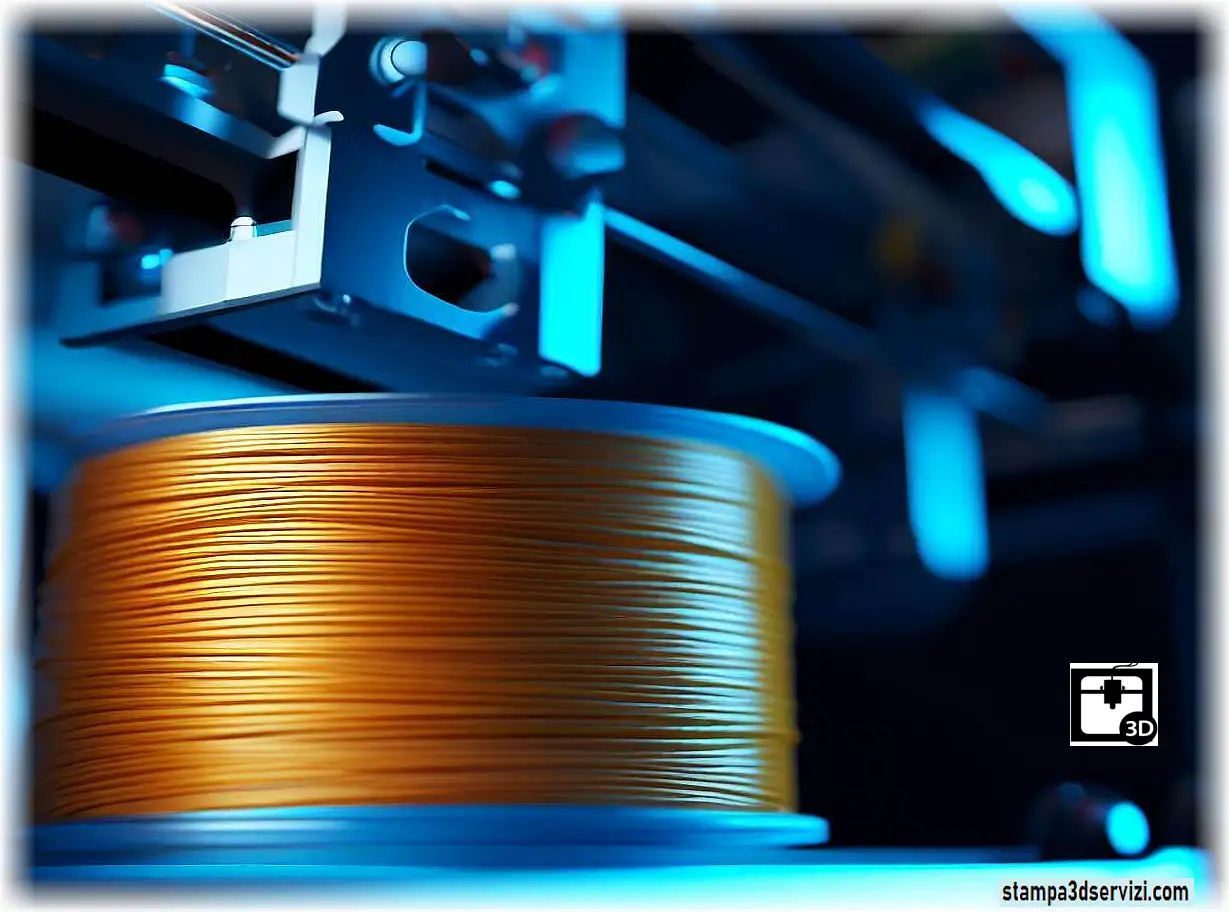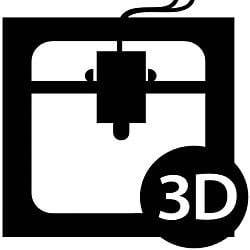Filaments for 3D Printing.

What they are and what are the most used filaments for 3D printing.
The Filaments for the 3D printing are plastic polymers that are used in 3D printers to create three-dimensional objects.
There are many types of filaments available on the market, each with its own properties and characteristics.The most commonly used filaments in FDM 3D printers, I'm the PLA (polylactic acid) e l’ABS (acrilonitrile butadiene stirene). PLA is a biodegradable and eco-friendly material, easy to print and ideal for beginners. ABS is more durable and impact resistant, but requires a higher temperature for printing and may emit harmful vapors.Other types of filaments include PETG (Ethylene glycol terephthalate), he nylon, it TPU (thermoplastic polyurethane) and polycarbonate. PETG is resistant to water and UV rays, while nylon is even more resistant and also flexible. TPU, on the other hand, is ideal for printing flexible objects and polycarbonate is particularly resistant to impacts and even high temperatures..Why it is important to know how to choose the right filament for your 3D printing project.
It is important to know how to choose the right filament for your project based on the mechanical and thermal properties you are looking for.
Furthermore, you need to make sure you use a high quality filament to avoid annoying problems during the 3D printing itself, such as the low quality of the printed object, the possible jamming of the printer and the rapid degradation of the quality of the finished object itself.
Technical Filaments for 3D Printing
So-called technical filaments are more specialized filaments, designed for 3D printing objects with specific properties, such as resistance to high temperatures, flexibility or chemical resistance.
One of the most popular technical filaments is PEEK (polyether ketone ketone), known for its high resistance to high temperatures and corrosion. However, PEEK requires a specialized 3D printer capable of reaching very high temperatures and can be expensive.
Another technical filament is PEI (polyetherimide), known for its high chemical and thermal resistance. PEI is often used in the production of wear-resistant and corrosion-resistant parts.
Carbon fiber filament is another popular type of technical filament, known for its high strength and lightness. It is often used in the production of aircraft and automotive parts.
Other technical filaments include PPSU (polysulfones polyethersulfones), he TPC (thermoplastic copolymer), the PETT (polyethylene terephthalate), the PCABS (polycarbonate/acrylonitrile butadiene styrene) and glass fiber reinforced nylon.
Choosing the right technical filament depends on the specific properties you want for the finished object. However, It's important to keep in mind that technical filaments can be more expensive than standard filaments and may require a specialized 3D printer.
How Filaments for 3D Printing are produced.
3D Printing Filaments are produced using different techniques and materials depending on the application. In general, the filament production process involves the melting of plastic materials, such as ABS, PLA and PET-G, which are then extruded through a spinneret to create a continuous filament. The filament is then cooled and wound onto a spool for distribution.
There are several techniques for producing filaments for 3D printing, including production by hot or cold extrusion, production by hot melting and production by twin screw extrusion. Furthermore, there are also 3D printing materials based on metals and ceramics, which require production processes different from those of plastic materials.
In general, the quality of 3D printing filaments is essential to the quality of 3D prints. The filaments must have a uniform diameter and good adhesion between the different layers during printing. For this reason, 3D Printing filament manufacturers carry out rigorous quality checks on their products to ensure they meet the required standards.
Filaments to produce casts with 3D printing.
The filaments to produce casts with 3D printing can be made using materials such as plaster, concrete or epoxy resin.
These materials are mixed with water or other chemicals to create a paste and then extruded through a 3D printer. Once printed, Casts can be used to create objects in various materials, such as ceramic or metal.
In particular, filaments for producing plaster casts are very common and are used for the production of architectural models, product prototypes and even for the production of artistic artefacts. 3D printing plaster casts allows you to create objects with high precision and very fine details, reducing production times and improving the quality of the final result.
In general, The production of casts using 3D printing is an ever-evolving technology and is expected to become increasingly common in the future, thanks to its ability to create objects with high precision and the versatility of the materials used.
